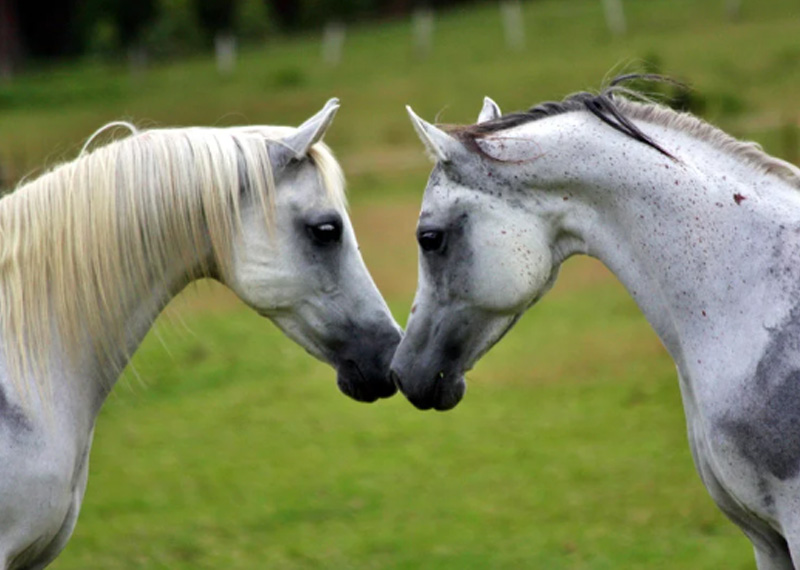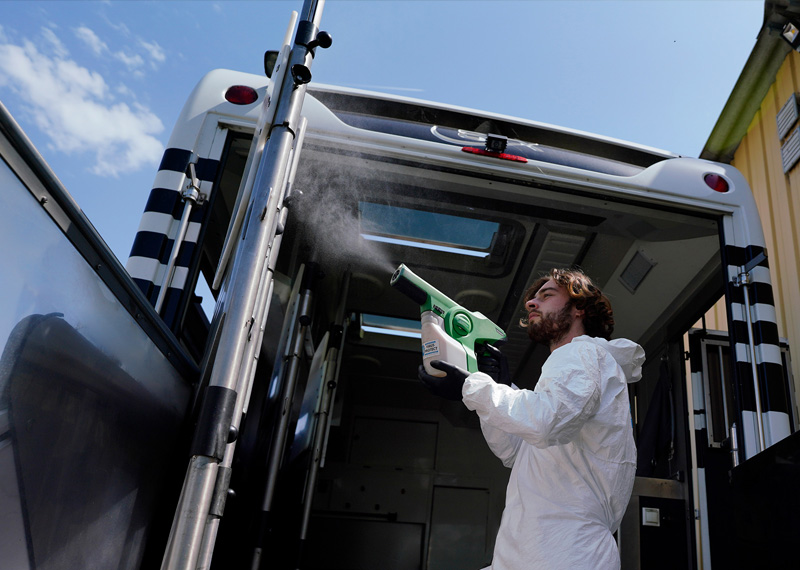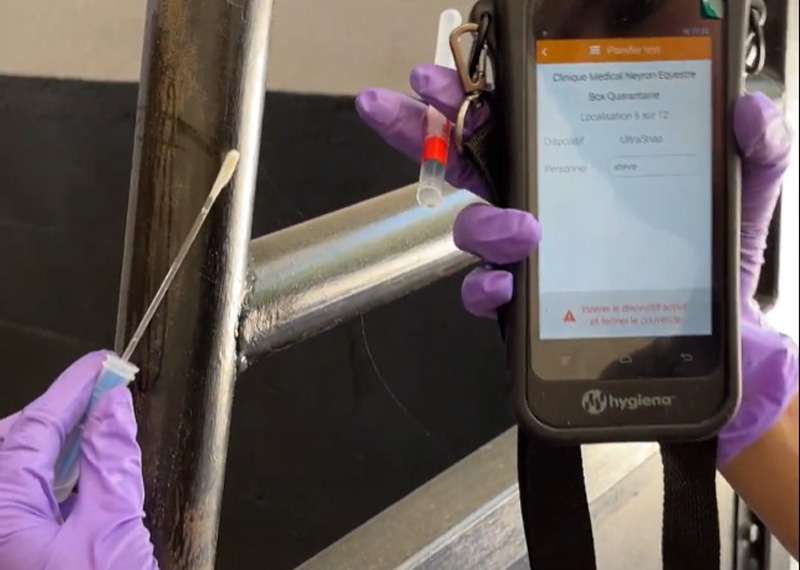why disinfect ?
Horse racing events bring together horses from all over the world. Managing hygiene is crucial to avoid the spread of diseases that can lead to race cancellations and halt a horse's racing season.
The challenges of disinfection in the horse racing environment are specific and complex due to the highly competitive nature and constant movement of horses and people involved. Here are the main challenges:
High Density and Mobility of Horses: Racetracks regularly host a large number of horses from various regions or countries. This high density of equine population, coupled with the high mobility of horses between events, increases the risk of rapid spread of infectious diseases.
Frequent Contact Between Horses: During races and training, horses often come into close contact, facilitating the direct transmission of pathogens. Moreover, the shared use of facilities such as stables, wash areas, and training tracks increases the risk of indirect transmission.
Management of Equipment and Facilities: Effective disinfection of shared equipment (bridles, saddles, etc.) and facilities (stalls, barriers, etc.) is crucial but can be challenging to maintain due to intensive use during events.
Disease Control and Prevention: Quick identification and isolation of sick horses are critical to prevent the spread of diseases. However, implementing effective quarantine protocols can be complicated by the high number of animals and the frequency of competitions.
Lack of Awareness and Compliance: Despite awareness of the risks, there may be a lack of awareness or compliance with best disinfection practices among breeders, trainers, and racetrack personnel, further exacerbating the risk of disease spread.
Logistical and Financial Challenges: Implementing comprehensive disinfection measures can be logistically difficult and costly, especially for smaller establishments or during large events that gather many participants.
To overcome these challenges, it’s imperative to adopt a comprehensive approach that includes ongoing staff training on biosecurity practices, the use of effective disinfection products suitable for equestrian environments, strengthening disease control protocols, and close collaboration among different sector stakeholders. Solutions like PhotoACTIVE Equine, offering long-lasting antimicrobial protection, can play a crucial role in preventing disease transmission and protecting the health of horses in the horse racing environment.
The rhinopneumonia crisis in France in 2018
The 2018 equine rhinopneumonitis crisis had significant repercussions on the equestrian sector in France, leading to increased awareness of the importance of preventing and controlling infectious diseases in this community.
The crisis resulted in estimated losses of 5 million euros for various stakeholders in the French equestrian sector. These losses included veterinary costs, income losses due to the cancellation or postponement of competitions, and costs related to quarantining affected establishments.
This not only affected the revenue generated by these events but also impacted the preparation and performance of the athletes and horses involved.
How PhotoACTIVE Equine can help you
PhotoACTIVE Equine can significantly aid professionals in the horse racing industry by addressing the unique disinfection challenges they face. Here’s how this innovative solution can be beneficial:
- Broad-Spectrum Antimicrobial Protection: PhotoACTIVE Equine’s powerful antimicrobial properties can effectively eliminate a wide range of pathogens, including bacteria, viruses, and fungi, that are commonly found in the racing environment. This helps in preventing the spread of infectious diseases among horses coming from different regions.
Long-Lasting Effect: Unlike traditional disinfectants that require frequent reapplication, PhotoACTIVE Equine provides long-lasting protection. This residual activity ensures that surfaces remain protected for an extended period, reducing the need for constant disinfection and allowing for more focus on racing activities.
Safe for Horses and Humans: Given its approval for veterinary use, PhotoACTIVE Equine is safe to use around horses and humans. This is crucial in racing environments where both animals and people are in close proximity, ensuring that health safety standards are maintained without compromising the well-being of either.
Efficiency and Cost-Effectiveness: By reducing the frequency of applications needed to maintain a hygienic environment, PhotoACTIVE Equine helps professionals save on both time and costs associated with disinfection practices. This efficiency is particularly valuable during busy racing seasons.
Ease of Use: PhotoACTIVE Equine can be easily applied to a variety of surfaces, including stalls, fences, equipment, and transport vehicles, making it a versatile solution for the entire racing facility. Its adaptability simplifies the implementation of biosecurity measures across different areas of the racetrack.
Enhanced Biosecurity: Implementing PhotoACTIVE Equine as part of a comprehensive biosecurity plan can significantly enhance the overall hygiene of the racing environment. By effectively controlling the microbial load on surfaces, it aids in creating a safer environment for both the horses and the people involved.
Reputation and Trust: By using an advanced disinfection solution like PhotoACTIVE Equine, racing professionals can demonstrate their commitment to maintaining high health safety standards. This can enhance their reputation among participants, regulators, and the public, building trust in their commitment to animal welfare and disease prevention.
In summary, PhotoACTIVE Equine offers a practical and effective solution to the disinfection challenges in the horse racing industry, contributing to the health and safety of horses, reducing the risk of disease outbreaks, and supporting the smooth operation of racing activities.




